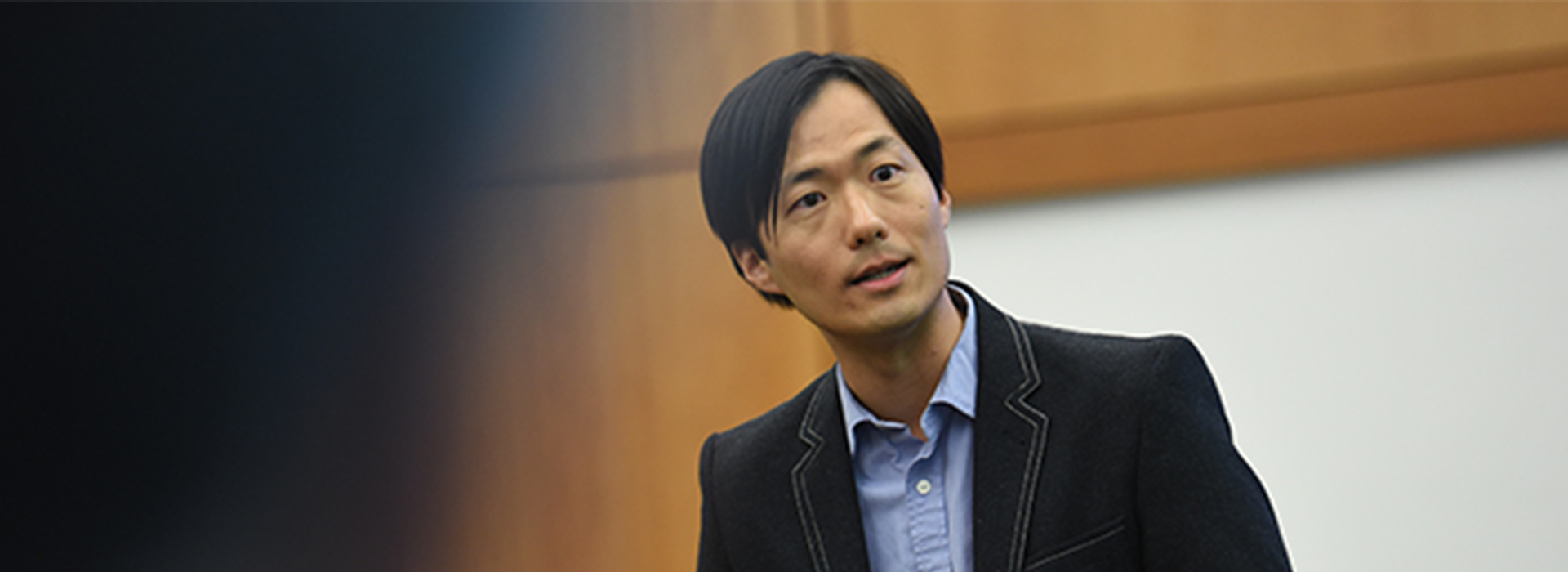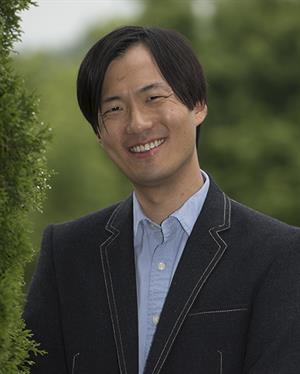By: Cynthia Macdonald
1 May, 2019

Hyun Youk knows more than most about resurrection.
Thirteen years ago, the CIFAR Azrieli Global Scholar was enrolled as a PhD student in physics at MIT. Soon after he started interning in a nanotechnology lab, however, things started to go awry. “Basically, I was fired,” he says. “I was messing up experiments and they let me go.”
 Youk wasn’t sure what he should do next, but his scientist’s curiosity would soon provide an answer.
Youk wasn’t sure what he should do next, but his scientist’s curiosity would soon provide an answer.
Walking to work, he’d noticed laughter ringing from inside the biophysics lab run by Professor Alexander van Oudenaarden. Youk didn’t know anything about biology (“I didn’t understand the difference between DNA and RNA, because the last time I’d taken biology was in high school,” he says) but he needed a new lab in which to work. Also, van Oudenaarden’s students were obviously enjoying themselves. So Youk decided to offer his services there – even if that meant starting an entirely different career than the one he’d planned.
Since then, Youk has won multiple awards for his research, and is currently a principal investigator at the Delft University of Technology in the Netherlands. Operating at the interface between biology and physics, he uses mathematical rules to explain how living systems behave.
With his career well established, he’s now specializing in resurrection of a different sort: this time, as it pertains to cells. “Why is it that for certain life forms, you can stop life, then resume it just by pushing a button?” he asks.
In his lab, Youk has been trying to zero in on the quantitative principles that set living systems apart from non-living ones. To a biologist, a cell might be considered “alive” when it has the ability to replicate itself and manufacture proteins. But Youk points out that objects such as seeds or yeast spores can’t do these things; technically, they are dead.
Why is it that for certain life forms, you can stop life, then resume it just by pushing a button?
Until energized with nutrients, that is. At this point they begin engaging in activities consistent with cellular life. Before that, one might say they are simply dormant, existing at a kind of crossroads between the two states.
But recently, Youk’s lab has developed a groundbreaking method for tricking dormant yeast spores into manufacturing proteins without the aid of any nutrients at all.
“We’ve also found that we can quantify this – and this is where the physics comes in – assigning a number for each spore based on its ability to make proteins. This tell us how far away they are from being able to replicate themselves, and also how far away they are from losing function altogether.”
This is work that calls into question what “life” really is. At the microscopic level, there really is no agreed-on definition. Biologists know that human cells, for example, continue to divide and make proteins for some time after a person dies. And to a physicist, there is arguably never any such thing as death; whether person, plant or object, everything is made of atoms that are simply reconstituted in other ways upon our destruction.
Youk’s research is truly interdisciplinary, with the potential to engage philosophers as well as those working in biology and physics. “If we can stop life in certain organisms and then resume it,” he asks, “how far can you push that?”
Notifications